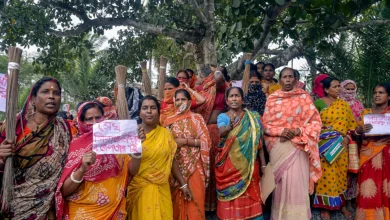Cyber criminals drain over ₹10,300 crore since April 2021: Report
Most SIM cards used by cybercriminals were traced back to Assam, West Bengal, and Odisha.

Cybercrime has become a significant issue in India, with over ₹10,300 crore lost to cybercriminals since April 1, 2021. The Indian Cyber Crime Coordination Centre (I4C) revealed that around ₹1,127 crore has been successfully blocked within the country. They receive complaints through the National Cybercrime Reporting Portal (NCRP), with over 5,000 complaints reported, out of which 40-50% are related to frauds linked to gangs operating from China, Cambodia, and Myanmar.
The CEO of I4C clarified that these scams aren’t run by nation-states but rather by criminal gangs based in these countries. Victims of c.crime can report incidents through the 1930 call center. If reported within an hour, banks can often block the money. The NCRP has seen a significant increase in reported cases, with 4.52 lakh cases in 2021, rising to 9.66 lakh cases in 2022, and further to 15.56 lakh cases in 2023.
Losses from cybercrimes reached ₹10,319 crore by the end of 2023, with only a small fraction being blocked and restored to victims’ accounts. To help victims recover their money more easily, the government is working on new Standard Operating Procedures. Currently, victims often have to obtain court orders in states like Gujarat and Karnataka to retrieve their funds.
Various crime trends have been identified, including sextortion, online booking scams, and fraudulent activities related to platforms like OLX. Gangs in specific regions, such as Jharkhand, utilize tactics like KYC expiry and Android banking malware to swindle money from unsuspecting individuals.
Furthermore, cybercriminals engage in duping people through investment apps, fake job offers, Ponzi schemes, illegal lending apps, and fraudulent customer care centers. Other prevalent crimes involve Android malware fraud, social media impersonation, and sextortion, where individuals are blackmailed for money.
Notably, the Indian agency successfully thwarted a major attack targeting the G-20 website, preventing a distributed denial-of-service (DDoS) attack aimed at disabling the site. Additionally, efforts led to the rescue of Indian citizens from Myanmar, where they were trapped into committing cyber fraud after being promised job opportunities.
Recent technological advancements include ‘Pratibimb’, a software accessible to state police forces to locate cybercriminals in their areas. This software, coupled with swift action, has significantly reduced cybercrime activities in regions like Jharkhand’s Deoghar and Jamtara. Law enforcement has made 454 arrests in these areas, aided by information provided by the software.
The Indian authorities have blocked over 2.95 lakh SIM cards, 2,810 websites, 595 mobile applications, and 46,229 IMEI numbers based on complaints received. Most SIM cards used by cybercriminals were traced back to Assam, West Bengal, and Odisha, which have emerged as hotspots for procuring SIM cards for illegal activities. Efforts are being made to crack down on these sources.
You might also be interested in – Cybercrime cases in Delhi nearly doubled in 2022 as per NCRB report



